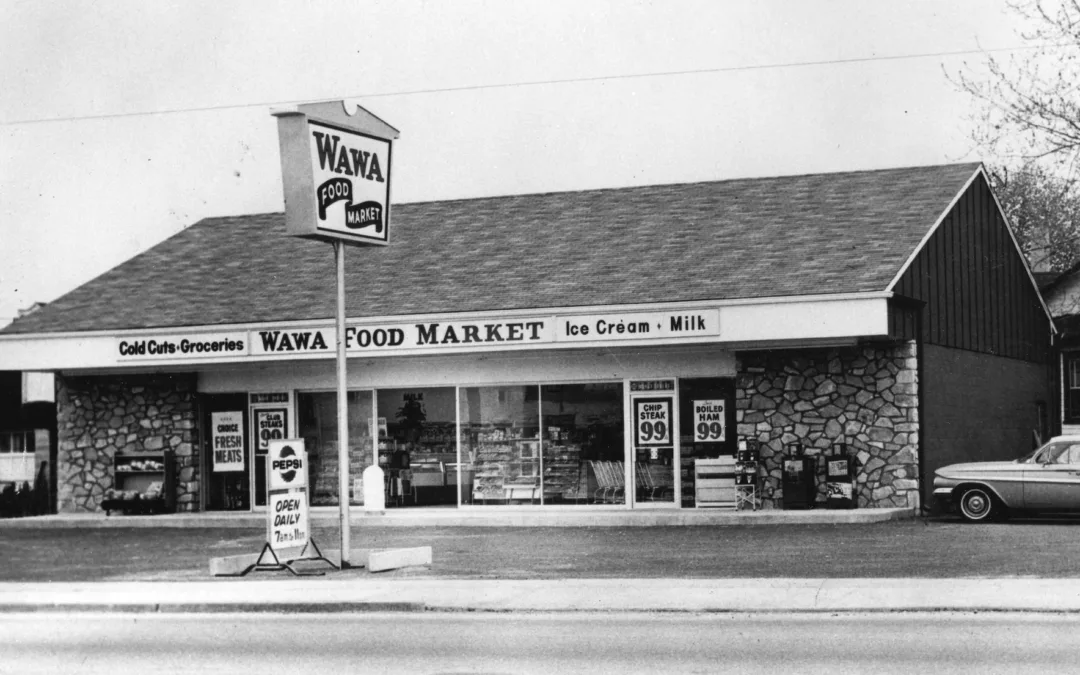
FILE - In this Oct. 30, 1948, photo the main business district of Donora, Pa., is is cloaked in smog, the sunlight virtually obliterated by thick low hanging pollution. From 1969 to 1980, Congress passed a wide range of environmental bills tackling air and water pollution, garbage, protections for fisheries and marine mammals, and endangered species; in 1990 Congress tackled acid rain by rehauling the Clean Air Act. Now in the week of April 20, 2009, lawmakers begin hearings on an energy and global warming bill that could revolutionize how the country produces and uses energy, and could for the first time reduce the pollution responsible for heating up the planet. (AP Photo/Walter Stein, FILE)
Dozens of area residents died from complications related to the incident in the suburban Pittsburgh town, while thousands of locals developed respiratory issues. Decades later, the New York Times would refer to the Donora Smog as “one of the worst air pollution disasters in the nation’s history.”
A fog settled over Donora in Washington County at the start of the week. By Thursday, the haze was so bad, the streetlights had to be turned on mid-afternoon and people walking through town were struggling to find their way.
While it may sound like the small town 20 miles south of Pittsburgh saw the worst of the haze from the Canadian wildfires earlier this month, this particular event actually happened in late October 1948. Over the course of a few days, hundreds were sickened and 26 people died, along with dozens of animals, in what became known as the Donora Smog. Decades later, the New York Times would refer to it as “one of the worst air pollution disasters in the nation’s history.”
Sulfur dioxide emissions from the local zinc works plant were frequent occurrences in Donora. But a temperature inversion, in which a mass of warm air settled in the valley, trapped the poisonous gasses and formed a killer fog that hung over the town for five days until rain dispersed it.
“Donora had a severe event and in some ways it was like the Canadian wildfires and in some ways it was like the East Palestine train wreck,” said Mark Pawelec, a historian with the Donora Historical Society and Smog Museum. “But the wildfires will go out. The government stepped in after the train wreck in East Palestine after a lot of uproar about contaminated water and land. Donora had the zinc works for many years. While Donora had a major event, it also had 40 to 50 years of constant bombardment of pollution and there was no interest in remediation. Our soil is probably still contaminated.”

The Donora event introduced the nation to a new term, smog, and made the world aware of the dangers of unchecked pollution. It also helped shape the environmental movement that was to follow.
“Big events such as the wildfires have impacted our population, but it is the day-to-day pollution that also affects our population that tends not to get recognized,” Pawelec said. “Lower levels of pollution on a continuous basis have a similar impact.”
What Was the Donora Smog?
In the early 1900s, US Steel built a zinc works plant in Donora. Not long after, the local residents noticed their backyard gardens were dying and farm animals were getting sick. Dozens of local families banded together and brought lawsuits against the zinc works in the 1920s and 1930s. But the company drew out the legal proceedings to bury the claims against its facility.
As the week of October 24, 1948 began, local residents paid little attention to the dense, heavy fog covering the town. Smoke from the zinc works typically limited visibility in the small town until afternoon.

The fog grew more dense over the course of the week and by Thursday, the sun had become so obscured by fog that the streetlights had to be turned on in the middle of the day.
According to Pawelec, who has spoken to some of the survivors, residents didn’t realize things were much worse than usual for the first few days. It wasn’t until people started dying that they knew something was different about this particular fog.
“They had a hard time seeing,” he said. “When they blew their noises the snot was dark. The fog was so thick they could hardly navigate their cars on the road. Someone would have to get out and lead the car down the street.”
Donora was a typical steel mill town, according to Pawelec, completely self-contained. Everything you could possibly need was a short walk away. The idea of leaving when the fog got worse wasn’t even considered, he said.
Since the zinc works was the main employer in town, many families of the workers underreported their illnesses to protect the company.
On Oct. 31, rain finally came and dispersed the killer fog. The dead and sick were not only from Donora but also from the neighboring communities of Webster and Sunnyside, which were located downwind from the zinc works.
Twenty-six people were reported dead in the immediate aftermath of the incident, Pawelec said. It’s believed that as many as 70 area residents ultimately died from complications related to the Donora Smog, with thousands more locals developing respiratory issues.

What Happened After the Event?
While investigations were conducted to determine the cause, a lack of scientific understanding of air pollution and its effects on public health hampered efforts to formally identify the source.
Despite the lack of federal action immediately following Donora’s deadly smog event, it did lay the groundwork for cleaner air and air pollution regulations.
In 1955, the US passed the Air Pollution Control Act, the first federal legislation pertaining to air pollution. It declared air pollution to be a danger to public health and welfare, and provided federal funding for research on air pollution.

The Clean Air Act was established in 1963 to create a federal program to research methods for monitoring and controlling air pollution. It was amended in 1965 to provide the first federal standards for controlling the emission of pollutants.
In 1970, the Environmental Protection Agency was established to consolidate federal efforts to research, monitor, set, and enforce standards that ensure environmental protection.
Donora’s slogan “Clean Air Started Here” is a testament to the people who lost their lives in the 1948 event, Pawelec said.
“If nobody died, then the clean air legislation and regulations would have been delayed even further than what it was,” Pawelec said. “It was because people died that the nation took notice.”
Politics

Breaking down IVF: What it is and why it’s important in the fight for reproductive rights
In vitro fertilization, or IVF, has been at the forefront of a major reproductive rights battle, but what exactly is it? For many Americans, in...

Fetterman introduces bill to protect affordable internet access for 23 million households
The Affordable Connectivity Program expired on Tuesday due to Republican opposition, putting affordable high-speed internet access at risk for 23...

Democrats advance election bill in Pennsylvania long sought by counties to process ballots faster
HARRISBURG, Pa. (AP) — Pennsylvania's House of Representatives on Wednesday approved a bill long sought by counties seeking help to manage huge...
Local News

Look out, Sheetz, Wawa is officially moving into your territory with Central Pa. expansion
The Delaware County-based convenience store chain broke ground on its first Dauphin County location Wednesday in Middletown, with five more stores...

What do you know about Wawa? 7 fun facts about Pennsylvania’s beloved convenience store
Wawa has 60 years of Pennsylvania roots, and today the commonwealth’s largest private company has more than 1,000 locations along the east coast....






